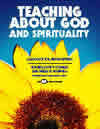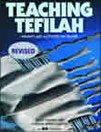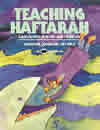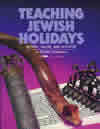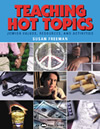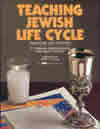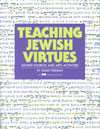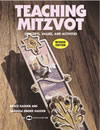- Home
- Play & Learn Home
- Online Enrichment
- Experience Modern Israel
- Israel It's Complicated
- Jewish and Me
- Jewish Holidays Jewish Values
- Jewish Values in Genesis and Jewish Values in Exodus
- Min Ha’aretz
- Our Place in the Universe
- Simply Seder
- The Prophets: Speaking Out for Justice
- Making T'filah Meaningful
- Make, Create, Celebrate
- Yom Haatzmaut Resources
- Hebrew Apps
- About The OLC
- What is the OLC?
- Introduction
- Get Started
- Resources
- OLC Content
- Parent Materials
- See My OLC Classes
- Store
Integrating Torah Into All Aspects of Your Curriculum
|
By Sorel Goldberg Loeb Editor's Note: A.R.E. teacher resources are the perfect complement to Behrman House textbooks. Each chapter in Teaching Torah: A Treasury of Insights and Activities is devoted to one of the 54 Torah portions. Below you will find techniques from Teaching Torah to help you integrate Torah into a wide range of courses and make Torah study a vital part of your students' religious school experience. An "Index of Strategies" found in the back of Teaching Torah can help you locate these and other connections between Torah and your curriculum. |
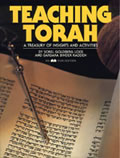
|
PRAYER
-
Show students that some of our most important prayers have their origins in the Torah. Teaching Torah offers dozens of examples where selections from the Torah have entered the liturgy. For example, open a prayer book to V'zot HaTorah in the Torah service. Then find Deuteronomy 4:44 in a humash to discover that Moses said these words just before repeating the Ten Commandments to the people of Israel. When teaching Aleinu, show students how Moses' words in Deuteronomy 4:39 have become part of that prayer ("Know this day, there is none other"). And when you study V'ahavta, turn to Deuteronomy 6: 5–9 in a humash and help students locate the words with which they are now familiar.
-
Connect the liturgy to the lives of our ancestors. Often, our ancestors are named in our prayers as if to establish our credentials before God. Help students see themselves as part of that line of Jewish tradition. For example, the chapter on Chayai Sarah in Teaching Torah suggests that before studying the Kaddish, students should imagine how Abraham might have expressed his grief over Sarah's death (Genesis 23). In the chapter on Vayigash, use the story of Jacob's departure from Canaan for Egypt to introduce Tefillat HaDerech, the Traveler's Prayer (Genesis 44–47). Ask students: If you were leaving home on a long journey, what would you hope for in your prayers?
-
Link home rituals to their source in the Torah. Blessings and prayers for the home can have greater relevance when students place them in a historical context. For example, "Analyzing the Text" #5 in Ekev suggests that when teaching Birkat HaMazon you refer students to Deuteronomy 8:10 and discuss why our people, on the brink of entering the Promised Land, needed to be taught to express gratitude for food.
LIFE CYCLE
-
Connect life-cycle events to their source in the Torah. Most of our life-cycle observances are ancient (brit milah); some are new (simchat bat). Explore the origins of circumcision in Genesis 17 (Lech Lecha #13) or the bedeken ceremony in Laban's deception of Jacob in Genesis 29 (Vayaytzay #12).
-
Illustrate Jewish life-cycle practices with examples from the Torah. Help students discover how our rituals have evolved over thousand of years—what has changed and what has remained the same. For example, when explaining the rituals for death, burial, and mourning, teach how Jacob marked Rachel's grave (Vayishlach, "Extending the Text" #9—Genesis 35:19) or recall the mourning periods for Aaron (Numbers 20:29) and Moses (Deuteronomy 34:8). Compare and contrast those ancient practices with today's. Read Jacob's final blessing for Ephraim and Manasseh (Genesis 48:15–16) as a prologue to discussing ethical wills.
SHABBAT AND HOLIDAYS
-
Root the observance of Shabbat in the Ten Commandments. As you teach each holiday, explore its origins in the Torah. For example, for Shabbat, compare the wording of the Fourth Commandment in Exodus (20:8–11) and Deuteronomy (5:12–15). What differences can your students identify? Help them understand that L'chah Dodi for erev Shabbat reflects the ideas in both texts (Va'etchanan #2).
-
Associate Shabbat rituals with the practices of our ancestors. For example, when baking or eating hallah, introduce your students to the history of this special bread and the practices associated with it (Numbers 15:20). Invent a contemporary practice that reflects the ancient value of setting aside hallah as a gift for the Temple priests (Shelach Lechah #9).
-
Help your students understand the history of our holidays. Discover which holidays in the Jewish calendar are not Torah-based. Use a clothes line to create a holiday calendar in the following way: With your students, read the Torah portion Emor (Leviticus, Chapter 23). Have your students create cards listing each Torah-based holiday and its practices and pin the cards to the line in the order in which the holidays occur. Add the holidays not described in the Torah on different colored cards (Emor #9).
JEWISH VALUES
-
Help students recognize that Jewish values are derived from the Torah. For example, the Torah guides us in the humane treatment of animals and people. Examine the laws in Ki Taytzay ("Analyzing the Text" #5) about a mother bird and her young (Deuteronomy 22:6–7). Review Leviticus 19:14 and 32 for guidance about how to treat people who are physically challenged. Following this teaching, create your own set of guidelines to protect animals or the weaker members of your community.
-
Demonstrate to students that caring for the environment is as old as the Torah itself. In Teaching Torah, Shofetim, "Personalizing the Text" #10–12, the authors suggest having the students read the Torah portion to learn how we care for trees, even in times of war (Deuteronomy 20:19–20). Create posters illustrating this, annotated with phrases from the Torah.
AMERICAN JEWISH HISTORY
-
Connect some of the key values of America to the source which inspired them. Your students might be surprised to learn that the founding fathers of the United States were well-versed in the "Old Testament." The chapter on Behar, "Extending the Text" #6, suggests that students look in Leviticus to find the words that were inscribed on the Liberty Bell in Philadelphia (Leviticus 25:10). Invite your students to suggest other important ideas from the Torah and connect them to American history. Ask students what biblical image they would suggest for the back of the one dollar bill. Did they know that Benjamin Franklin suggested a scene showing the Jews being freed from Egypt (Beshalach #14)? Have students choose and draw a biblical image to put on the dollar. Debate whether it is appropriate to use such images on our currency.
-
Identify the importance of the Torah in the lives of early Jews in America. The Jews who left their homes in Europe brought dried kosher food, family bibles, and prayer books with them. Discuss the reasons why with your students. Do they know that there were Jews on both sides of the slave trade in the 18th and 19th centuries? Before you review historical documents relating to the Jewish attitude toward slavery, discuss the importance of our experience as slaves in Egypt or have your students make a fact-file of the Torah's attitude to slavery (start by looking up Leviticus 25:39ff, Deuteronomy 15:12–18, 23:16–17). For additional textual sources when teaching American Jewish History, see Challenge and Change: History of the Jews in America 1, 2, and 3 (Behrman House).
Torah is at the foundation of the Jewish people. By drawing on the techniques
in Teaching Torah, you can imbue your entire religious school program with
the history and language of the Torah, its lessons and laws, and its values and
standards of behavior.
Other Titles in the Teaching Series


